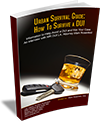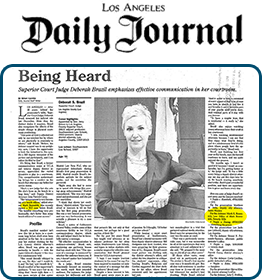The ignition interlock device or IID is a breath testing instrument or machine that is installed in a person’s car. The instrument goes between the key and the ignition of the car and tests for alcohol. It is required to be installed by an authorized installer or provider.
Once Installed in a Vehicle, IID Maintains a Record of the Driver’s Positive Result for Prohibited Substances and Disables the Engine to Prevent the Car from Running
If somebody has alcohol or possibly some other interfering compounds in their system, the machine or instrument is designed to stop the car from starting. It will cut out the engine so the car will not start. The device prevents the car from running, and it will keep a record anytime the driver tests positive for a prohibited substance.
In Los Angeles, the IID Is Required upon Any DUI Conviction
The theory behind the ignition interlock is that if somebody has had too much to drink, it will stop them from driving their car. The ignition interlock device has been around for many years, but now in Los Angeles County it is required on any conviction.
This started back in 2010 for a few pilot counties in California as a test market. They started with Alameda, Los Angeles, Sacramento, and two other counties requiring anybody convicted of driving under the influence in any of these counties have an IID installed. The duration for the device’s use varies depending on whether it is someone’s first offense, second offense, third offense or more.
The ignition interlock requirement is triggered if somebody is convicted of a DUI. So if someone is able to get the charges reduced or dismissed, they would not be required to install an ignition interlock device.
The California DMV Notifies Drivers When They Are Required to Install the IID
If they are convicted of a DUI, then the California Department of Motor Vehicles will send them notices of the requirement and notice of a suspension until they get an ignition interlock device installed. This would be separate from any suspension or requirements imposed by the DMV itself or the court itself. This is something special that is triggered by a conviction.
When the DMV receives the notice of conviction, they will send out a letter saying that the ignition interlock device needs to be installed in any car that someone owns or operates. If someone does not get that installed, then their license would be suspended and they would not be allowed to drive. If they got caught driving on a suspended license, they are looking at additional charges which include potential jail time or actually mandatory jail time if they are convicted.
Drivers Are Required to Use a County-Authorized IID Installer
If somebody gets one of these letters after a conviction, they are required to go to an authorized installer. There are various installers throughout Los Angeles and other counties that will install them. The installer also monitors these devices to see whether they are functioning properly.
The Service of the Approved Installers May Vary in Quality
Not all ignition interlock provider companies are the same. They have different levels of quality and customer service. Some equipment is better and more reliable than others.
There have been situations where people have been locked out or the ignition interlock device has stopped them from actually using their car, even when they were alcohol free. This is just because of the poor quality of equipment. We need to make sure if someone is required to have an ignition interlock that it is the right type of ignition interlock installed by the right person who will then monitor it correctly.
The Length of Time the IID Is Installed for Depends on the Sentence for the DUI Conviction
The ignition interlock periods vary depending on what type of sentence somebody is convicted of. The ignition interlock on a first time DUI is required for 5 months and on a second time DUI, the ignition interlock is required for 12 months. On a third it would be 24 months and a fourth accessible DUI conviction, the ignition interlock would be required for 36 months.
Each of these would be after a period of suspension. So if somebody is convicted in court of a DUI, that would trigger suspension of a driver’s license. In order to get the license back or reinstated after a period of time, they would have to put the ignition interlock device in any car that they owned or operate.
Declaration of Non-Ownership
There are certain provisions if someone does not own or have access to a car where the person can file a declaration of non-ownership. This has to be done right away within 30 days. Otherwise, they are required to have it and even if they submit the paperwork stating that they do not own or have access to a car, they would not have to put an ignition interlock device in. But they would not get their full driving privileges back until they have complied with the ignition interlock requirement.
The California DMV Strictly Enforces the IID Requirement
So if somebody did not have a car, they would not get a license and then when they did get a car, it would be required to put the ignition interlock device in that car when they got it. As one can see, the DMV is making it very difficult to get around this ignition interlock requirement.
The ignition interlock laws are temporary at this point. They are pilot counties and they are testing the feasibility of such a program going statewide. With my experience in the past, I would say that these laws are going to go from temporary to full-time. It is very rare that we see that something like this gets repealed.
Los Angeles County, one of the largest counties in California, has the most number of people and most number of DUIs. As a member of this pilot, it has been up and running for a couple of years now, and I don’t see it going away anytime soon.






 Personal Attention
Personal Attention Every criminal case is unique and no attorney can guarantee the outcome of a case. The information on this site is legal advertising and for general information only. Using this site, requesting books, information, consultations or communicating with Attorney Rosenfeld through its site does not form an attorney/client relationship.
Every criminal case is unique and no attorney can guarantee the outcome of a case. The information on this site is legal advertising and for general information only. Using this site, requesting books, information, consultations or communicating with Attorney Rosenfeld through its site does not form an attorney/client relationship.








